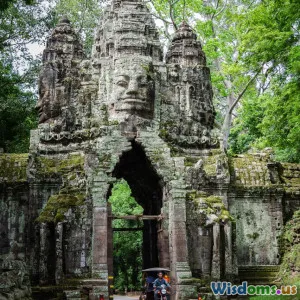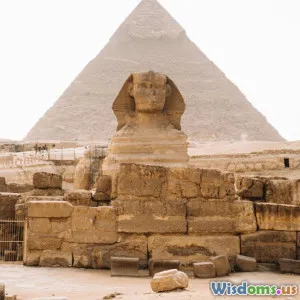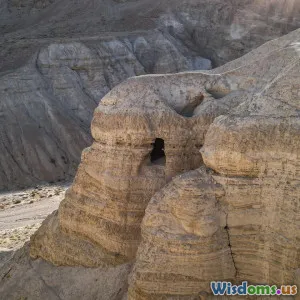
Forgotten Amazon Cities: How Lidar Technology Unveiled a Hidden World
7 min read Discover how Lidar technology reveals ancient lost cities hidden in the Amazon rainforest’s dense tapestry. (0 Reviews)
Forgotten Amazon Cities: How Lidar Technology Unveiled a Hidden World
The Amazon rainforest, often viewed as an impenetrable sea of greenery, is hiding secrets beyond imagination beneath its canopy. For centuries, explorers and archaeologists searched for signs of large, complex civilizations lost to time. Traditionally, dense foliage and inhospitable terrain made this quest nearly impossible. But with the advent of Lidar (Light Detection and Ranging) technology, a revolutionary shift has revealed sprawling ancient cities, reshaping our understanding of Amazonian history.
The Enigmatic Amazon: A Green Maze Concealing Lost Civilizations
The Amazon Basin, spanning around 6.7 million square kilometers and housing one of the Earth’s richest biodiversities, was once assumed to have only contained small, scattered tribal communities. From early European explorers to 19th and 20th-century archaeologists, the region’s thick canopy hindered efforts to find evidence for any large ancient urban landscapes. The popular narrative often saw the Amazon as a “pristine” wilderness without great urbanization.
Yet indigenous oral histories and occasional archaeological hints suggested smaller settlements, complex earthworks, and cultivation...
Enter Lidar: Seeing Through the Jungle Ceiling
Lidar technology, a remote sensing method that employs laser pulses from aircraft to map surface topography, revolutionized Amazon exploration. Unlike traditional aerial photography, which is blocked by dense foliage, Lidar filters out the vegetation “noise” to reveal the bare earth below with remarkable resolution.
The technique shoots millions of laser pulses per second, measuring the time it takes for light to bounce back, enabling the construction of detailed 3D terrain models. This can unveil geometric patterns – roads, ditches, plazas, and building foundations – that go unnoticed from the ground.
How It Works
- Airborne Platforms: Planes or drones equipped with Lidar scanners swoop above the rainforest.
- Laser Pulses: Millions of pulses pierce through gaps between leaves.
- Data Capture: The reflected signals help build a topographic map.
- Vegetation Filtering: Software algorithms remove trees, isolating ground features.
The results allow archaeologists to “walk” through virtual reconstructions of landscapes obscured by centuries of jungle growth.
Major Discoveries Empowered by Lidar
The City of Kuhikugu
One of the earliest successes was mapping Kuhikugu in Brazil’s Xingu region. Prior believed to be a few small villages, Lidar revealed interconnected plazas, defensive trenches, and roads covering over 20 square kilometers. This finding pushed the estimated population in the area to upwards of 50,000 inhabitants, indicating a highly advanced regional society.
The Southern Amazon Complexes
In 2018, a monumental project led by archaeologist José Iriarte revealed a network of over 60,000 ancient geometric earthworks and settlements — previously invisible due to dense forest cover. It pointed to managed landscapes with intensive agriculture feeding densely populated cities.
El Mirador’s Amazon Cousins
Inspired by Lidar’s success in Mesoamerica’s El Mirador, researchers scanned the Amazon and found lost urban areas rivaling early pyramidal complexes in scale and complexity.
Implications for Anthropology and History
The unveiling of these cities challenges long-held myths about the Amazon as a wild, untouched wilderness incapable of supporting large human populations.
- Population Estimates: Older estimates capped pre-Columbian populations at a few million; new data suggests tens of millions.
- Cultural Sophistication: Engineering feats such as water management, road networks, and urban planning indicate advanced political organizations.
- Ecological Impact: These civilizations managed and shaped the rainforest environment sustainably, informing modern conservation efforts.
Dr. Michael Heckenberger, an anthropologist, described the discoveries as “rewiring how we think about the Amazon and its ancient inhabitants.” He states, “What we once thought to be small isolated tribes were actually parts of expansive, interconnected cities.”
Challenges and Ethical Considerations
Despite the excitement, there are challenges:
- Preservation Concerns: Increased exposure may invite exploitation and looting.
- Indigenous Rights: Many areas are ancestral territories; partnerships with local communities are crucial.
- Data Interpretation: Lidar reveals shapes but requires hands-on archaeological validation.
The Future of Amazon Exploration
With ongoing technological improvements, including drone-mounted Lidar and AI-driven data analysis, we stand on the brink of even deeper insights. Ongoing collaborations between technology experts, archaeologists, and local stakeholders ensure discoveries are responsibly made, preserving both cultural heritage and rainforests.
Conclusion
Lidar technology has peeled back the shroud of dense foliage to expose a hidden world of forgotten Amazonian cities once thought lost forever. These discoveries reframe our understanding of human history in the Americas, highlighting civilizations’ ingenuity thriving in harmony with vast ecosystems.
As we continue to explore, these revelations inspire a renewed respect for indigenous heritage and the rainforest’s vital importance — a compelling reminder of how much there is still to learn beneath the world’s green canopy.
References:
- Heckenberger, Michael J. (2015). The Amazon’s Lost Cities Reconsidered. American Anthropologist.
- Iriarte, José (2018). Mapping Ancient Amazonian Earthworks. Journal of Archaeological Science.
- Turner, Beth L. Lidar and Landscape Archaeology in the Amazon. Nature Communications, 2021.
Explore the depths of our planet’s past with the lens of modern science — uncovering stories etched in soil beneath nature’s cover.
Rate the Post
User Reviews
Popular Posts



















